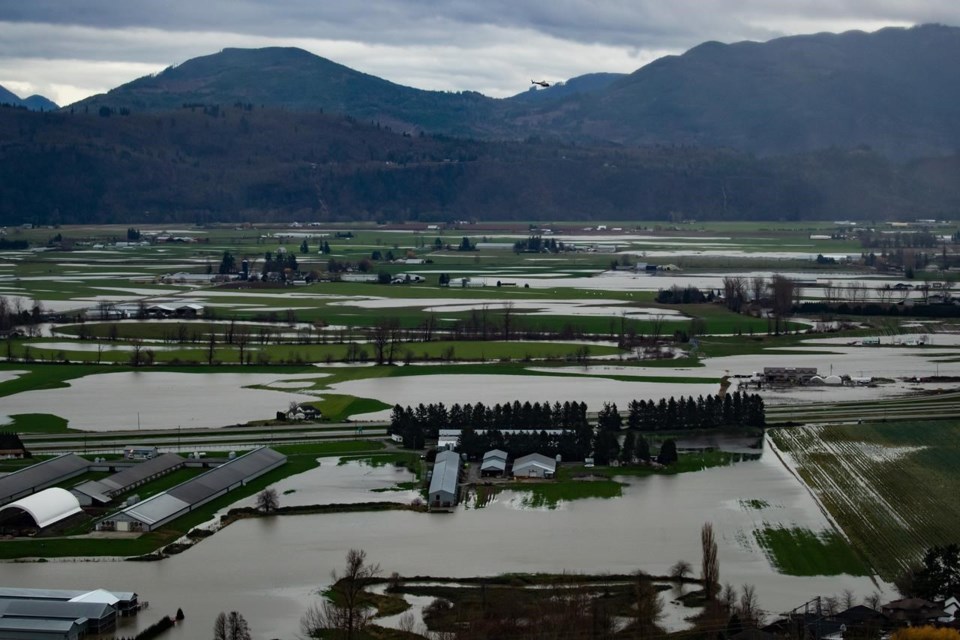VANCOUVER — When torrential rain caused widespread flooding and washed out major highways across British Columbia last fall, the provincial government was quick to flag the creation of a system to rank atmospheric river systems.
But eight months later, Environment Canada and its scientists say there is still no timeline for when such a system might be operable.
"A decision on whether or not to implement such a scale as an operational information product would be premature at this time," Environment Canada said in a statement.
Public Safety Minister Mike Farnworth had said the province could have a usable rating system for atmospheric rivers at the start of this year.
"That will allow us to, I think, prepare more effectively. My expectation is, from what I've been told, that will be coming. Looking to be implemented at the beginning of January 2022," he told a news conference on Nov. 22.
In the previous few days, about 20 rainfall records had been broken across the province. Landslides shut down the Trans-Canada Highway and other key roads, and the Sumas Prairie was flooded as dykes were overwhelmed.
The rain was brought by an atmospheric river, in which moist tropical air travels over long distances in a narrow band. On the west coast of North America, the phenomenon is known as a "pineapple express" because it tends to originate near Hawaii.
The weather office said it is studying various rating scales to reflect the intensity of atmospheric rivers with a numeric value, but "there are no immediate plans to formally adopt such a scale operationally in the short term."
The B.C. Ministry of Public Safety did not directly respond to questions about an updated timeline.
But Environment Canada said it is instead focused on analyzing the "relevance" of such a system for Canada and noted any new products must undergo rigorous evaluation and peer review to ensure validity and reliability before implementation.
"This is essential for public safety," it said in a statement.
Roxanne Vingarzan, a senior manager of applied sciences at Environment Canada, said researchers are aiming for the system to include about five to eight levels, but that it is "very much in its research stage."
"It’s essential that any proposed scale, or specialized product designed to assist in emergency management, meets the decision-making needs of the public authorities. This includes ensuring that situationally relevant information is timely, accurate and well understood," she said.
One aspect of the study aims to understand how a warming climate will affect the severity and duration of atmospheric rivers, Vingarzan said.
“Climate models are indicating that severe storms are expected to become much more frequent in duration and more severe. This is one of the motivating factors behind our project because we are expecting that these atmospheric rivers are not going away and, if anything, they're going to be more impactful in the future," she said.
Ruping Mo, a senior research scientist and operational forecaster with Environment Canada, said the classification system would rely on the same prediction system that generates current forecasts and warnings. He said the current weather models can provide "confident" atmospheric river prediction forecasts up to five days in advance.
"We are not going to increase the forecast model accuracy, but it can help better communicate the impact of the storm, and maybe can get some early alarm to the operational forecast," he said.
Vingarzan added that, though a new ranking system would not increase accuracy, it would provide historical context to "identify its rarity and potential impacts."
"Forecast accuracy depends on weather models which are constantly being improved by (Environment and Climate Change Canada's) Canadian Centre for Meteorological Research," she said in an email.
In the meantime, Emergency Management BC said the province is prepared to use the existing Alert Ready system.
"The atmospheric river rating system is not the sole determinant of an alert being issued. Should a community, or communities, feel there is an imminent threat to life or public safety, the province stands ready to use the Alert Ready system," it said in a statement. "First Nations and local authorities are the experts on the ground, and emergency managers — at the local and provincial levels — will continue to closely co-ordinate."
Alert Ready is available across Canada and allows officials to issue public safety alerts through television and radio broadcasters, as well as wireless devices.
While the system is co-ordinated provincially, it is up to local government officials to use it. In extreme cases, the province can intervene and put out an alert directly, Farnworth said in May. He noted that while officials were prepared to use it in some areas if necessary last fall, it is now in place for use provincewide.
This report by The Canadian Press was first published July 30, 2022.
Brieanna Charlebois, The Canadian Press



